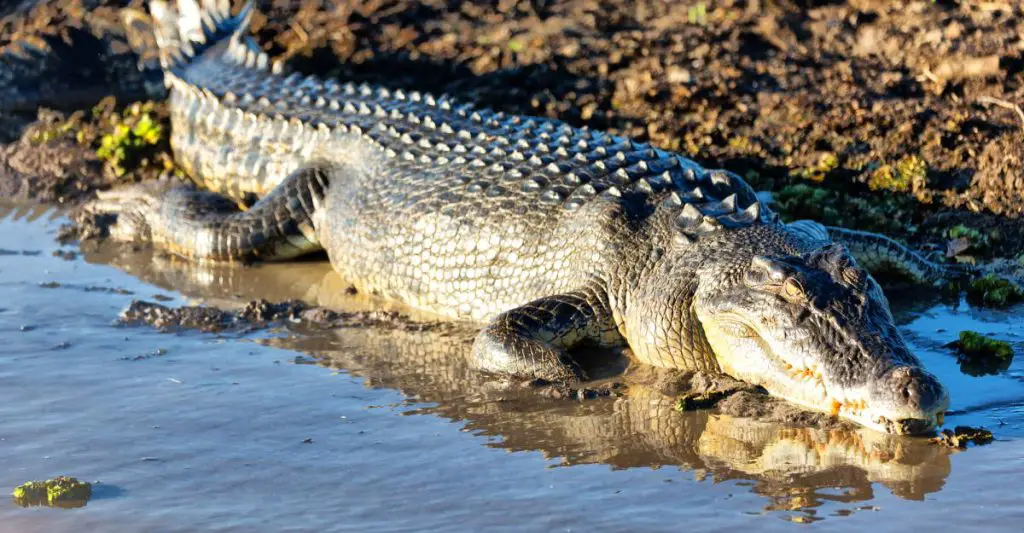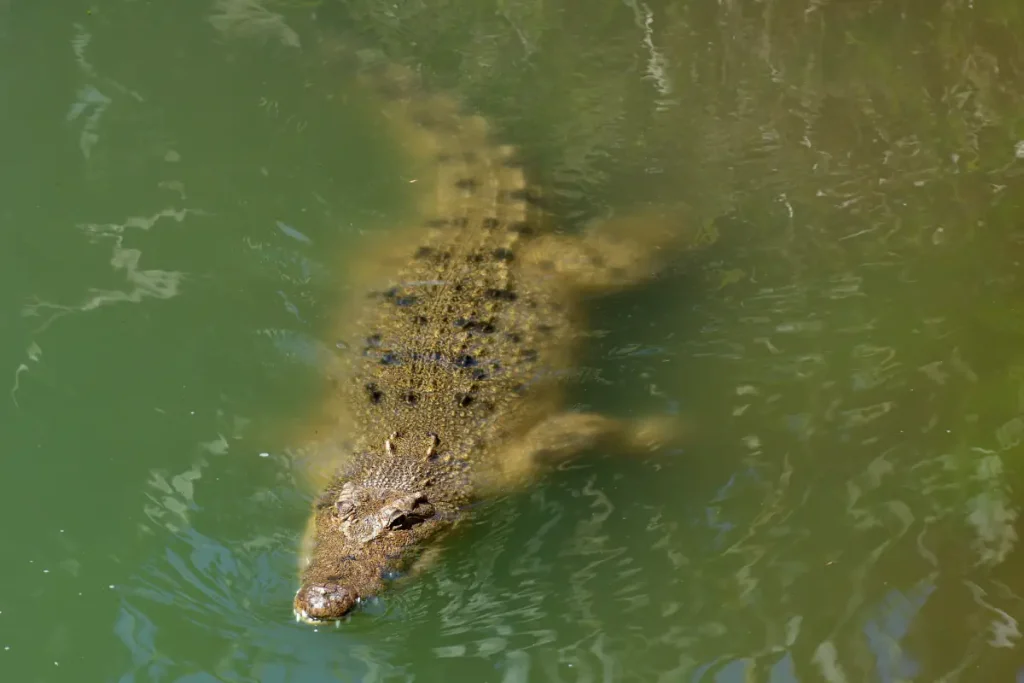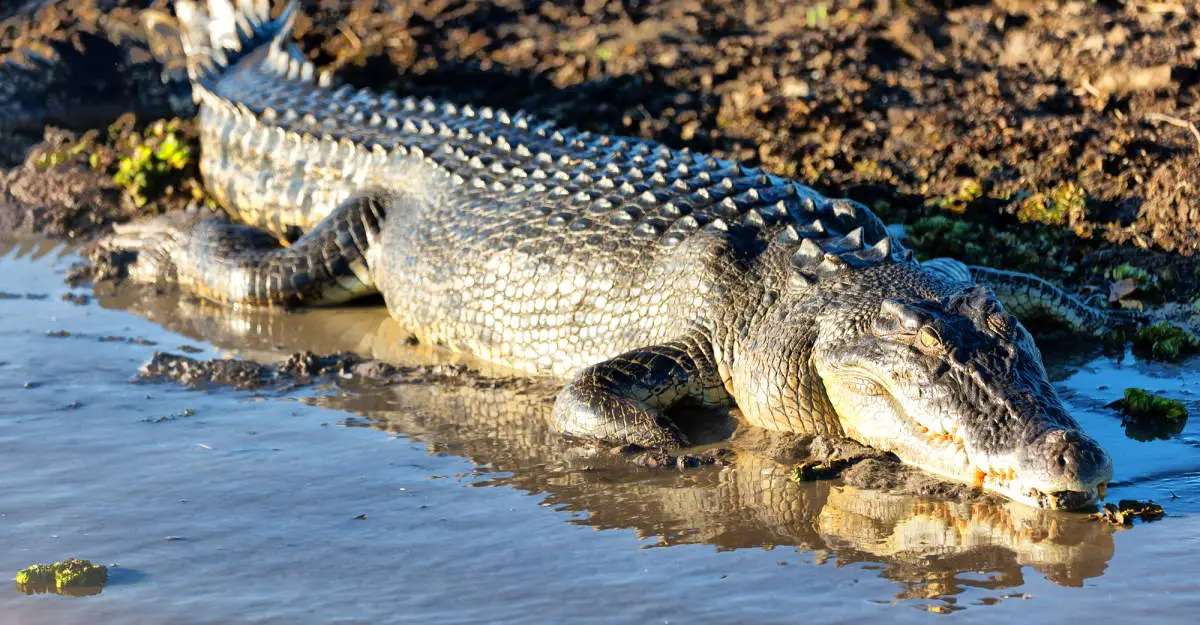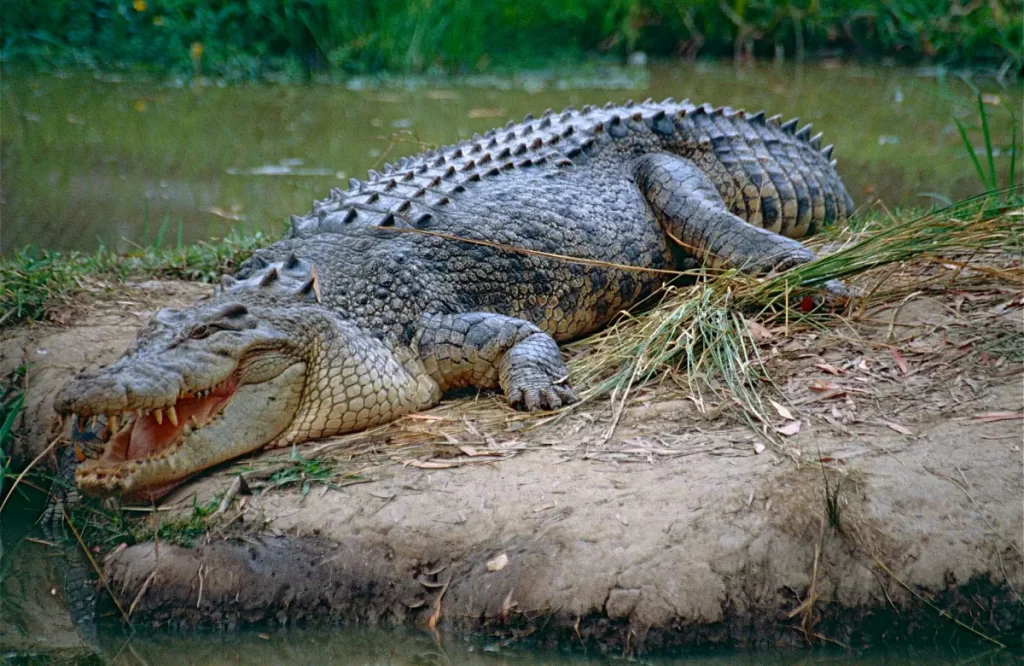Several hundred attacks on humans by crocodilians are reported annually, both non-fatal and fatal. To improve our understanding of human-crocodile conflict (HCC), a database was launched back in 2016. The Worldwide Crocodilian Attack Database, “CrocBITE” website and database was co-funded in 2013 with a small grant ($10,000 AUD) from Australia’s Charles Darwin University.
Where native large crocodilians and humans live close to each other, crocodile attacks on humans occasionally occur. In fact, only 9 out of 23 crocodilian species are considered dangerous to adult humans, and in those six species, only individuals 2 meters (6.6 feet) and longer in length are capable of killing adult humans.
Two species, which are also the largest and most aggressive, saltwater crocodiles, and Nile crocodiles have a well-known reputation for preying on humans. These two also have the most documented cases. Each year, hundreds of people die of either Nile or saltwater crocodile attacks.
The mugger crocodile, which can be found throughout the Indian subcontinent and the surrounding countries, is also very dangerous to humans, killing many people in India every year.
Despite the American crocodile being considered to be less aggressive, a few (unverified) fatal attacks were reported. Also, species/individuals smaller than 2 meters can inflict painful and dangerous bites on adult humans and they are even capable of killing children. Even then, according to the Worldwide Crocodilian Attack Database most interactions between crocodiles and humans are uneventful.

CrocBITE Project
The goal of the CrocBITE project was to engage the public, local authorities, health workers, and conservation managers to both contribute data and explore ways in which its lessons can be applied to saving lives. Zoolog Adam Britton (Research Institute for the Environment and Livelihoods, Charles Darwin University, Australia) says “we will be better able to deliver these lessons to a wide audience, particularly in rural areas where the risk of crocodile attack is highest with the aim of improving awareness and mitigate the risk of crocodile attack.”
From the CrocBITE website: “CrocBITE, the Worldwide Crocodilian Attack Database is an ongoing attempt to compile all reported attacks by any crocodilian species on a human, the purpose of which is to better understand risk factors leading to such attacks and ultimately help to improve human safety and, as a consequence, crocodilian conservation. Although this is an ongoing and regularly updated project, attack reporting and record-keeping is highly variable across many different countries, and hence the database does not pretend to be complete.”

Related: Amazing crocodile facts
CrocBITE website provides a means of accessing the database for analysis and educational purposes, and you can contribute to its ongoing efforts by submitting attack data to a moderator. CrocBITE recognizes the important and valuable contributions of a large number of people, all of whom are credited on the appropriate page.
The website also has a nice Data Visualization feature. As of December 2017, there were more than 4,100 total incidents recorded in the database. You can also help to improve the database with your own data, and by bringing any errors or omissions to the researchers’ attention.
The list of Crocodilian species considered dangerous to humans

According to the CrocBITE project, nine (out of 23) Crocodilian species are considered dangerous to humans. Gharials, which are native to the northern part of the Indian Subcontinent and can easily be recognized with their long, thin snout, don’t attack humans. Some sources say it is a myth that gharials are man-eaters. Jewelry found in their stomachs may have been the reason for the myth. Possibly they swallowed this jewelry as gastroliths, used to aid digestion or buoyancy management.
- Black Caiman (Melanosuchus niger) lives along slow-moving rivers, lakes, seasonally flooded savannas of the Amazon basin, and in other freshwater habitats of South America. They can often grow longer than 13 feet (about 4 meters). Larger specimens have been known to attack people.
- Mugger Crocodile (Crocodylus palustris) can be found in freshwater pools, wetlands, lakes, and slow-moving streams throughout the Indian subcontinent and the surrounding countries; from Iran to the western fringes of Southeast Asia. Males of the species are said to grow up to 4-5 meters (13-16 feet) in length. According to CrocBITE, between 2008 and 2013, Mugger crocodiles attacked 110 people. The victim of the attack died in around one-third of those incidents.
- American Crocodile (Crocodylus acutus) populations occur from the Atlantic and Pacific coasts of southern Mexico to South America as far as Peru and Venezuela. It also lives on many of the Caribbean islands such as Cuba, Jamaica, Hispaniola, and Grand Cayman. Adult males grow to approximately 16.5 feet (about 5 meters) in length. They usually prefer smaller vertebrates as prey. But reports of attacks on people are not unheard of. According to CrocBITE, between 2008 and 2013, 90 people were attacked by an American Crocodile, which resulted in approximately 20 deaths.
- American Alligator (Alligator mississippiensis), can grow up to 4.5 meters (15 feet) in length. But larger specimens also exist. The largest alligator ever recorded was 15 feet and 9 inches (4.8 meters) in length. Normally, alligators do not show aggressiveness against humans. According to Britannica, most incidents did not seem to start with the alligator but rather began with people attempting to pick up, capture, or otherwise handle the animal. Between 2000 and 2007, alligator attacks averaged just under 11 per year in Florida, with a death ratio of less than 10%. Between 1948 and 2005, wildlife officials documented 379 alligator attacks on people, which resulted in 17 deaths.
- Saltwater Crocodile (Crocodylus porosus) is the largest and most aggressive crocodilian. Fully grown adult males can reach more than 20 feet (about 6 meters) in length. They can be found primarily in Southeast Asia, from southern India through Australia’s northern fringe. Despite their name, they can and will be found mostly in freshwater. In fact, all crocodiles including the “saltwater” crocodile are actually freshwater animals. It’s worth emphasizing this because it’s the cause of far too many crocodile attacks in Australia. Each year, at least hundreds of attacks on humans occur. In Australia a quarter of those attacks were fatal; in Malaysia half of the attacks resulted in the victim’s death. Since the records are kept by only Australia and Malaysia, there can be also undocumented attacks.
- Nile Crocodile (Crocodylus niloticus) is the largest freshwater predator in Africa and the second largest crocodile after the saltwater crocodile. It is quite widespread throughout Sub-Saharan Africa, occurring mostly in the central, eastern, and southern regions of the continent, and part of Madagascar. The adult male Nile crocodile is between 3.5 and 5 meters (11 feet 6 inches and 16 feet 5 inches) in length and weighs 225 to 750 kg (500 to 1,650 lb). But, specimens exceeding 6 meters (20 feet) in length were also reported (see Gustave). In all crocodilians, Nile crocodiles are responsible for most human deaths. Despite most attacks going unreported, the Nile crocodile along with the saltwater crocodile is estimated to kill hundreds (possibly thousands) of people each year, which may be more than all other crocodilian species combined. According to IUCN-SSC Crocodile Specialist Group, between 2000 and 2004, the average number of Nile crocodile attacks per year was more than 300, and 63% of these attacks were fatal.
- The false gharial (Tomistoma schlegelii), also known as Malayan gharial, Sunda gharial, and tomistoma, is a freshwater crocodilian native to Peninsular Malaysia, Borneo, Sumatra, and Java. It is responsible for a few fatal attacks on humans. In 2008, a 4-meter (13-feet) female false gharial attacked and ate a fisherman in central Kalimantan; his remains were found in the gharial’s stomach. This was the first verified fatal human attack by a false gharial. However, by 2012, at least two more verified fatal attacks on humans by false gharials had occurred indicating perhaps an increase in human-false gharial conflict possibly correlated to the decline of habitat, habitat quality, and natural prey numbers.
- West African Crocodile or desert crocodile (Crocodylus suchus) is a species of crocodile related to – and often confused with – the larger and more aggressive Nile Crocodile. Despite it is less aggressive than the Nile crocodile, several attacks on humans have been recorded, including fatal ones.
- Morelet’s crocodile (Crocodylus moreletii), also known as the Mexican crocodile, is a modest-sized crocodilian found only in freshwaters of the Atlantic regions of Mexico, Belize, and Guatemala. It usually grows to about 3 meters (9.8 feet) in length. There have been recent reports that the species has attacked humans on multiple occasions and at least 12 documented human fatalities have occurred.
Sources
- Worldwide Crocodilian Attack Database CrocBITE
- “Expanding CrocBITE” on Dr. Adam Britton’s Croc Blog
- Crocodile attack on Wikipedia
- “7 Crocodilian Species That Are Dangerous to Humans” on Britannica
- “Crocodilian Attacks” on IUCN-SSC Crocodile Specialist Group website.
- Space Shuttle Endeavour’s Touchdown Meets Columbia’s Salute [An amazing photo from the past] - February 29, 2024
- Moon Landings: All-Time List [1966-2024] - February 23, 2024
- From Orbit to Ordinary: 10 Earthly Applications of Space Technology - January 23, 2024




This is Brandon from CrocBITE. The saltwater crocodile is responsible for hundreds of attacks every year, not the 30. And there are more than 6 species, the Tomistoma has also been responsible for a small number of fatal attacks recently. The West African crocodile and the Morelet’s crocodile are also responsible for a number of attacks every year.
Hi, Brandon. Sorry for the late (very late) answer. And also thanks for the valuable info. I updated the post.